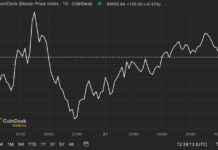A Russian gas cut and rate hikes to tame inflation would limit growth to the lowest since the 1970s.
MADRID, 26 Jul. (EUROPA PRESS) –
The International Monetary Fund (IMF) has substantially lowered its growth forecasts for the world economy in 2022 and 2023 as a result of the impact of the war in Ukraine, the tightening of monetary policy to calm inflation and the impact of the Covid-19 in China, warning that risks are tilted to the downside and make a worst case scenario “plausible” with one of the weakest global growth rates since the 1970s.
The IMF assumes that world GDP “shrank in the second quarter”, due to recessions in China and Russia, added to several ‘shocks’ that hit a world economy already weakened by the pandemic, including high inflation around the world. , especially in the US and major European economies, which has led to tighter financial conditions, a worse-than-anticipated slowdown in China from the Covid-19 outbreaks, and negative spillover effects from the war in Ukraine.
In this way, the base scenario handled by the IMF in the update of its world economic perspectives, which revises the forecasts published last April, contemplates a growth of world GDP of 3.2% in 2022 and 2.9% in 2023, which represents a cut of four and seven tenths, respectively.
As for inflation, on the other hand, the Fund has raised its global projections to 8.3% this year, compared to 7.4% in April, and 5.7% in 2023, nine tenths more than in spring.
In the case of advanced economies, the IMF has lowered its growth forecasts to 2.5% in 2022 and 1.4% next year, when in April it had estimated an expansion of 3.3% and 2.4 %, respectively. Likewise, it has revised its inflation forecast upwards, placing it at 6.6% this year and at 3.3% the following year, compared to 5.7% and 2.5%, respectively, communicated in April.
Specifically, the IMF has severely cut the growth forecast for the US as a result of the impact of the Federal Reserve rate hikes, to 2.3% in 2022 and 1% in 2023, compared to the expansion 3.7% and 2.3% that had been forecast, respectively, in spring.
In the case of the euro zone, the Fund’s estimate anticipates an expansion of 2.6% this year, two tenths less than in April, and 1.2% the following year, compared to 2.3% in the previous forecast.
On the other hand, GDP growth forecasts for emerging economies have been downgraded to 3.6% in 2022, compared to the previous 3.8%, and to 3.9% in 2023, from the 4.4% forecast previously.
Specifically, the new IMF projections reflect the impact of the substantial worsening of the pace of expansion in China, as a result of the measures to contain the pandemic, with GDP growth of 3.3% in 2022, compared to 4.4% expected in April, and 4.6% next year, half a percentage point less than the previous forecast.
On the other hand, the IMF has improved its forecast for Russia in 2022, when it anticipates a 6% contraction in GDP, less severe than the 8.5% drop forecast in April, although it has worsened to 3.5% the contraction in 2023, versus the 2.3% pullback he previously forecast.
Likewise, in its updated forecasts, the IMF warns that the risks to the economic outlook “are overwhelmingly downward” and recognizes that the possibility that they materialize makes an alternative scenario with higher levels of inflation and growth still plausible. weaker, which would affect Europe with particular intensity.
Among these elements of risk, the IMF points to the possibility of a cut in the flow of Russian gas to Europe in the context of the war in Ukraine, inflation that is more difficult to control than expected and stricter world financial conditions, as well as the threat that new outbreaks of Covid-19 or a further escalation of the real estate crisis further curb Chinese growth, in addition to the fact that geopolitical fragmentation could hamper global trade and cooperation.
“A plausible alternative scenario in which the risks materialize, inflation rises further and global growth slows to around 2.6% and 2% in 2022 and 2023, respectively,” the IMF warns.
In this sense, the institution led by Kristalina Georgieva points out that such low annual growth “has rarely happened in the past (only five times since 1970 has world growth been less than 2%)”.
The ‘shock’ would have a generalized impact, warns the IMF, since the increase in the world prices of raw materials and the more restrictive monetary and financial conditions would affect almost all countries, although to different degrees.
In this way, “Europe would be particularly affected in this scenario, with growth by 2023 in the European Union 1.3 percentage points lower than in the baseline, which implies a regional growth close to zero”
Under this worst-case scenario, the direct impact of restrictions on fossil fuels would account for about two-fifths of the total decline in GDP compared to the baseline scenario (1.5% by 2023), with higher inflation expectations and tighter financial conditions responsible for about another third and a quarter each, respectively.
Likewise, the IMF estimates that the international commodity markets would also react strongly, since the reduction in world oil supply would raise prices by 30% and, in the case of gas, where Russia’s role is even greater and less flexible distribution networks, prices would rise by 200%.
Thus, in the short term, the direct effect of higher prices and higher inflation expectations would contribute to raising inflation by around 1 percentage point, although, subsequently, lower demand and tighter financial conditions would mitigate the inflationary impact in 2023 and beyond.








